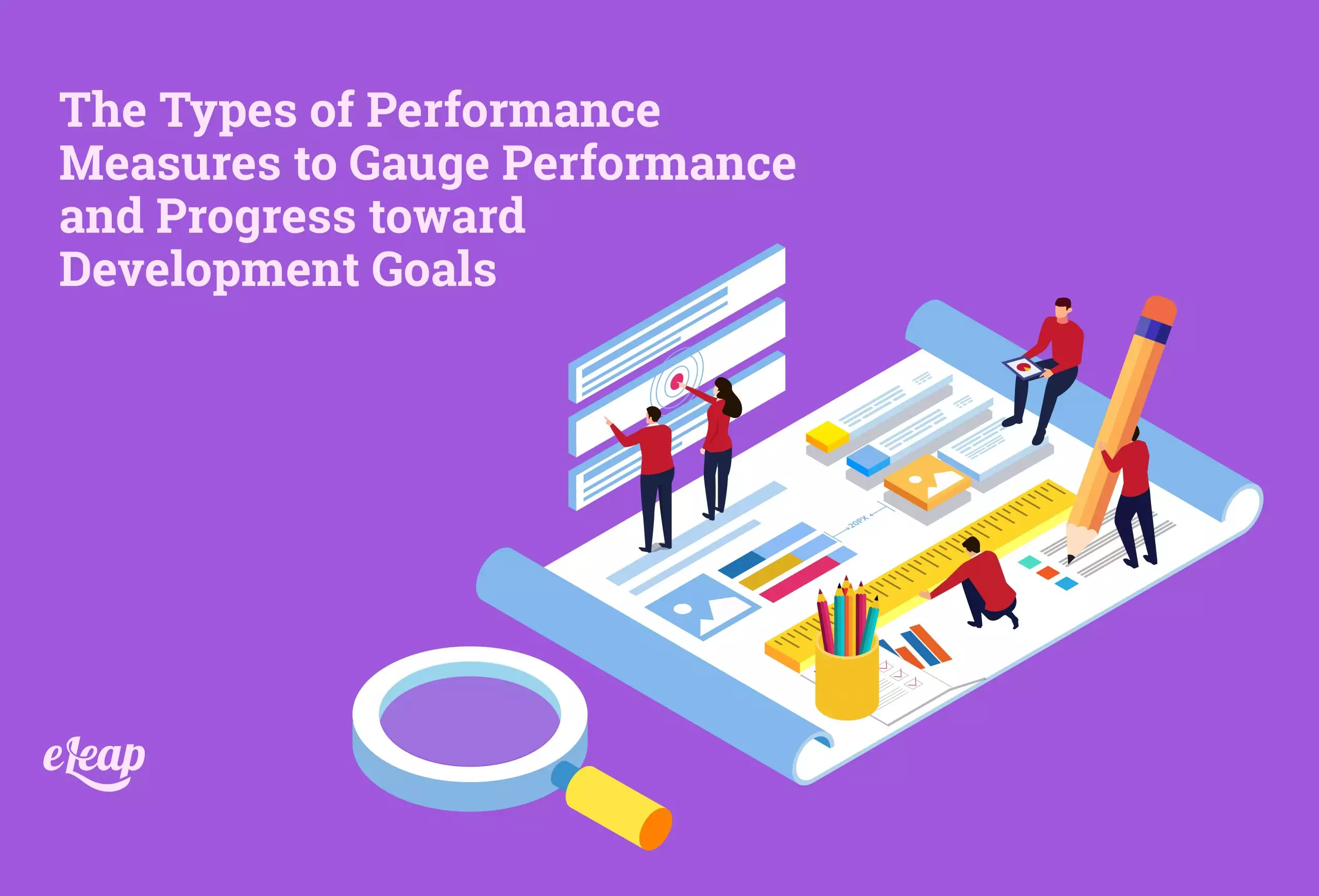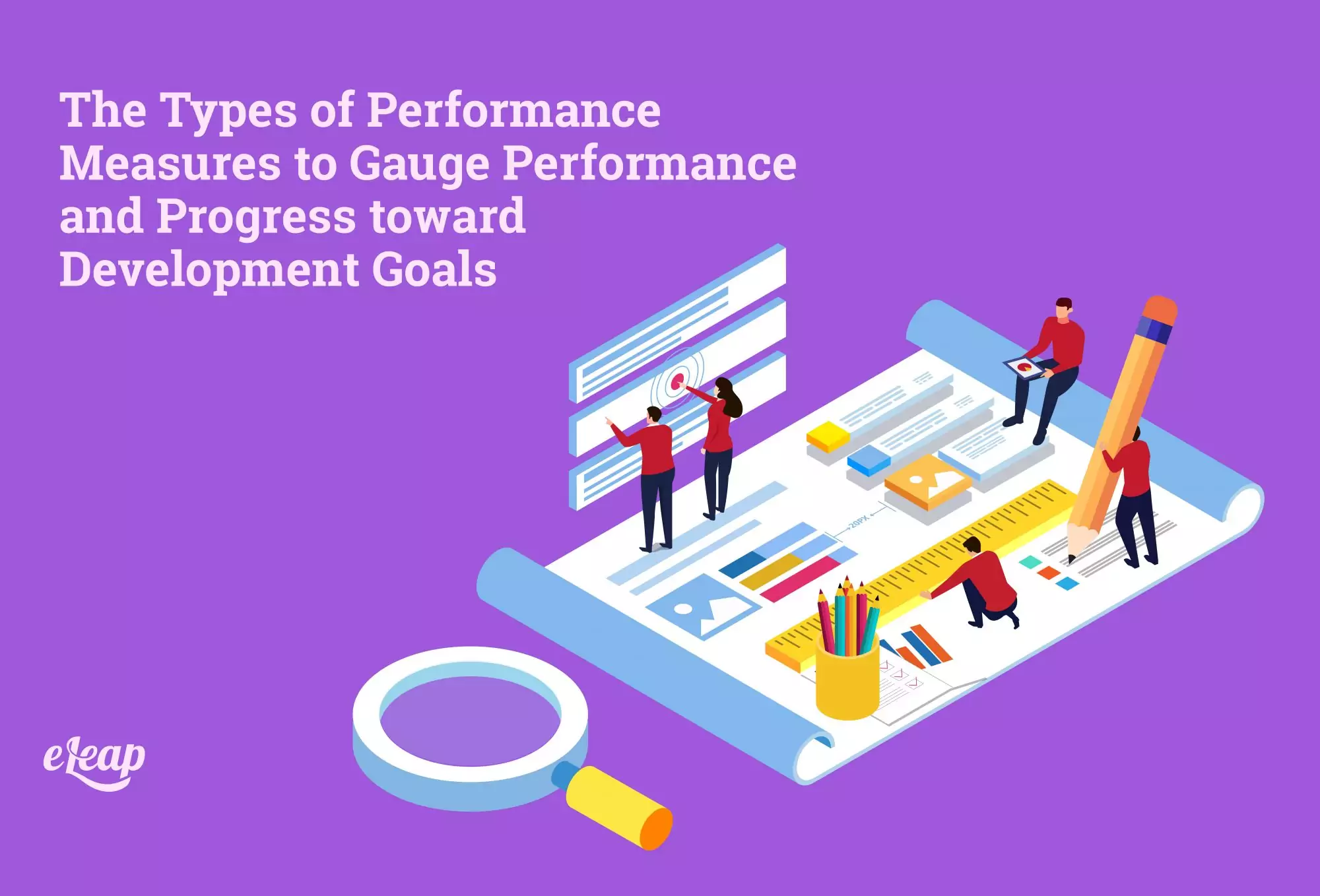The Types of Performance Measures to Gauge Performance and Progress toward Development Goals

The entire point of your L&D initiative is to help employees develop and grow. However, without a way to measure progress toward those goals, it is impossible to gauge success or determine if the employee needs a helping hand. The good news is that there are simple, effective ways to set goals and guide the employee development process forward. In this post, we’ll discuss the various types of measures you can use, and then go over important tips for setting your own measures.

Measuring Up: Types to Consider
Each development goal should be customized to the individual employee and should connect to your overall business strategy. The same holds true for the measures used to gauge performance and progress toward those goals. Some of the types of measures you can use include the following:
Quality – This is a measure of how well something was done. For instance, if there was a test, how well did the employee score? If it was a module based on completion percentage, how much did they complete and how well did they retain the information learned? Quality also speaks to several other ideas, including accuracy, effectiveness, and more. Quality can also be used to measure the effects of development in the real world, outside of your LMS. For instance, if an employee completes customer service training, how does it change their effectiveness in working with customers? Are they more satisfied? Less? The same as before the employee completed the training?
Quantity – This is a measure of volume; how much work did the employee complete or produce? When it comes to development goals, you can use quantity (often combined with quality) as a determinant for how well information was retained and how easily the employee can apply it to their regular responsibilities. To use the customer service example once more, is the employee able to process a higher volume of calls accurately? Can they handle more cases after the training? Conversely, did the number of complaints drop?
Timeliness – Measuring timeliness is also important, and can be done outside the LMS to determine how well your training is supporting desired outcomes for employees. Is the employee able to complete their work in a more timely manner? Is work produced accurately, but quickly? Are deadlines being met?
Cost-Effectiveness – Training related to driving down costs should be measurable in the physical world. Has the employee developed a better grasp of the various costs involved with their position? Are they able to reduce waste while increasing ROI? Are resources being used more accurately and with greater care?
Setting Your Own Measures
Development goals must be measurable. That is, you must be able to gauge progress toward reaching a real-world goal through training, via observed employee performance or actions. Because employee roles vary so drastically, each goal must be tied to specific measures, and many times you will need to set your own. For each goal, you will need to determine which of the general measures discussed above is applicable and then home in on additional metrics that can be traced to help measure results.
Some of the questions you will need to ask during the measure-setting process include but are not limited to the following:
- What can we measure? Will you measure quality? Quantity? Timeliness? Cost-effectiveness? How can we measure it?
- Is there a percentage that we can track that will give us critical information about progress toward the goal?
- If there are no numbers or percentages, what is trackable? What can we use to judge the quality and accuracy of results?
- How do we judge the effectiveness of the results? What are the hallmarks of effective action, and what are the hallmarks of ineffective action? Where do we draw the line between the two?
- Does the measurement we’re using offer value and meaningfulness? Is it easily applicable and able to surface valuable information to inform processes or decisions?
- Does the employee have sufficient autonomy and control over the process or are their hands tied? If they lack autonomy, how can you grant more?
Real-World Examples
General measures and example questions are all well and good, but sometimes an example or two can help jumpstart your decision-making process. Here are a few examples of measures that you can put in place for employee development goals:
- How much time does it take to complete the development activity?
- What is the financial impact of completing the development activity?
- How much time is required to complete the activity?
- What percentage of the activity is complete at specific milestones?
- Will the development activity lead to a promotion, raise, or other meaningful change for the employee?
- Did the employee’s job title or grade change between beginning and finishing the activity?
- What were the results of pre and post-activity 360-degree assessments?
- Is the employee able to use new tools to achieve better outcomes for customers or clients?
- Does the employee show better engagement with their role after the activity?
How Do You Measure Intangibles?
Some measures may be quite tangible, but others will be harder to measure. How do you ensure those intangible results are in line with expectations?
- Gauge by looking at anecdotal evidence.
- Assess employee satisfaction before and after the activity.
- Conduct in-depth evaluations before and after the activity.
- Allow employees to self-assess before and after the activity.
Moving Forward with Development Goals
Development goals are critical. When broken down into milestones, you can create customized learning pathways that lead employees from where they are now to improved outcomes for themselves, as well as the business itself. However, without the means to measure progress toward those goals, it becomes difficult to tell if your efforts are working and if employees are actually benefiting.
By using the tips in this post, you should be able to set measures for each development activity and gather relevant meaningful information. Contact eLeaP to learn more about how our groundbreaking LMS can help improve outcomes for your employee development initiatives.